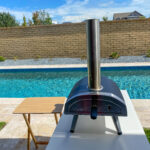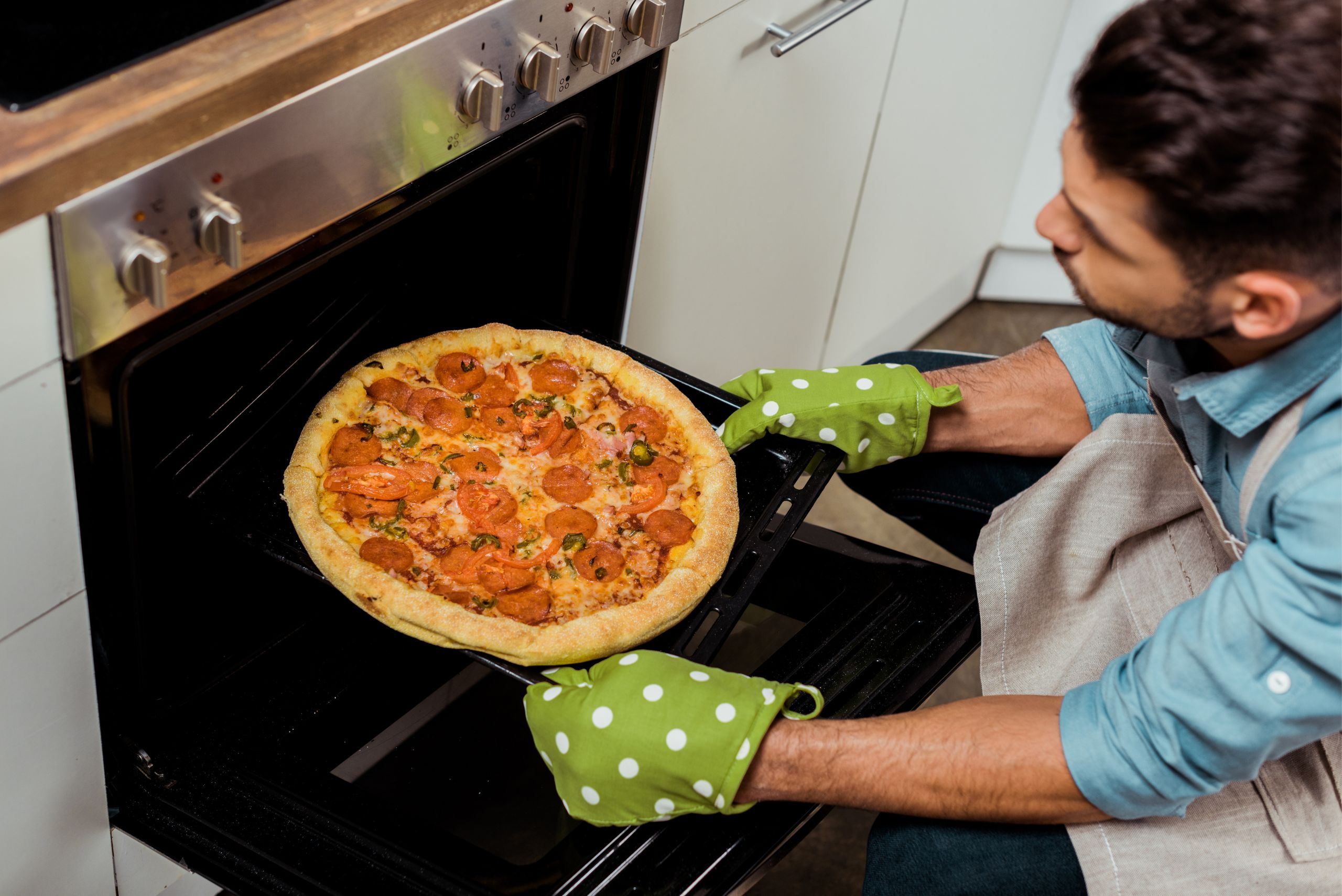Pizza is a beloved food worldwide, and the perfect pizza requires the perfect cooking method. Pizza ovens have been around for centuries, and they are still the best way to cook a delicious pizza. But how do pizza ovens work?
The basic principle behind a pizza oven is to cook the pizza quickly and evenly at high temperatures. The heat source is the most critical component of a pizza oven. Wood-fired pizza ovens are the most traditional and popular type of pizza oven. The wood fire is built in the oven, and the heat radiates from the fire to the pizza. The oven is designed to retain heat, so it stays hot even after the fire burns out. This allows the pizza to cook quickly and evenly.
There are many different types of pizza ovens, and they all work in slightly different ways. Some pizza ovens use gas or electricity as the heat source, while others use wood or charcoal. The type of heat source used affects the taste and texture of the pizza. Understanding how pizza ovens work is essential for anyone who wants to make the perfect pizza.
The Anatomy of a Pizza Oven
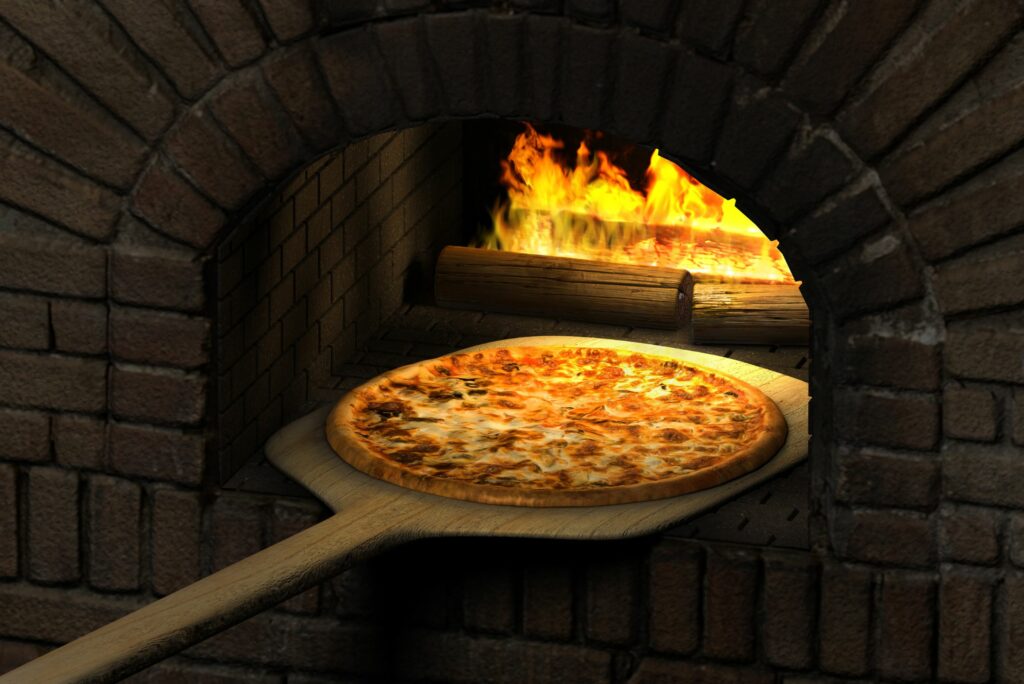
A pizza oven is a specialized oven designed to cook pizzas at high temperatures quickly. It consists of several components that work together to create the perfect pizza.
The Dome
The dome is the curved top of the pizza oven. It is usually made of brick or clay and is designed to retain heat. The dome is where the heat is stored, and it radiates down to cook the pizza. The shape of the dome is critical because it helps to distribute the heat evenly throughout the oven. The dome may have a small opening or vent to allow smoke and heat to escape.
The Hearth
The hearth is the floor of the pizza oven. It is usually made of firebrick or stone and is designed to absorb and retain heat. The hearth is where the pizza is placed to cook. The surface of the hearth should be smooth and free of any debris or crumbs that could burn and ruin the pizza. The hearth is typically sloped slightly towards the front of the oven, allowing the pizza to slide easily in and out of the oven.
The Insulation
The insulation is the layer of material that surrounds the dome and hearth of the pizza oven. It is designed to keep the heat inside the oven and prevent it from escaping. The insulation can be made of various materials, including ceramic fiber, vermiculite, or perlite. The thickness of the insulation is critical because it determines how well the oven retains heat. A well-insulated oven will cook pizzas more efficiently and use less fuel.
The Chimney
The chimney is the opening at the top of the pizza oven that allows smoke and heat to escape. The chimney should be positioned at the highest point of the dome to ensure that smoke and heat are drawn out of the oven efficiently. The size of the chimney is also essential because it determines how much air is drawn into the oven to fuel the fire. A chimney that is too small will not draw enough air into the oven, resulting in a weak fire and poor cooking performance.
In summary, a pizza oven is a specialized oven designed to cook pizzas at high temperatures quickly. It consists of several components, including the dome, hearth, insulation, and chimney, that work together to create the perfect pizza. The shape, material, and thickness of these components are critical to the oven’s performance and cooking efficiency.
The Science Behind Pizza Ovens
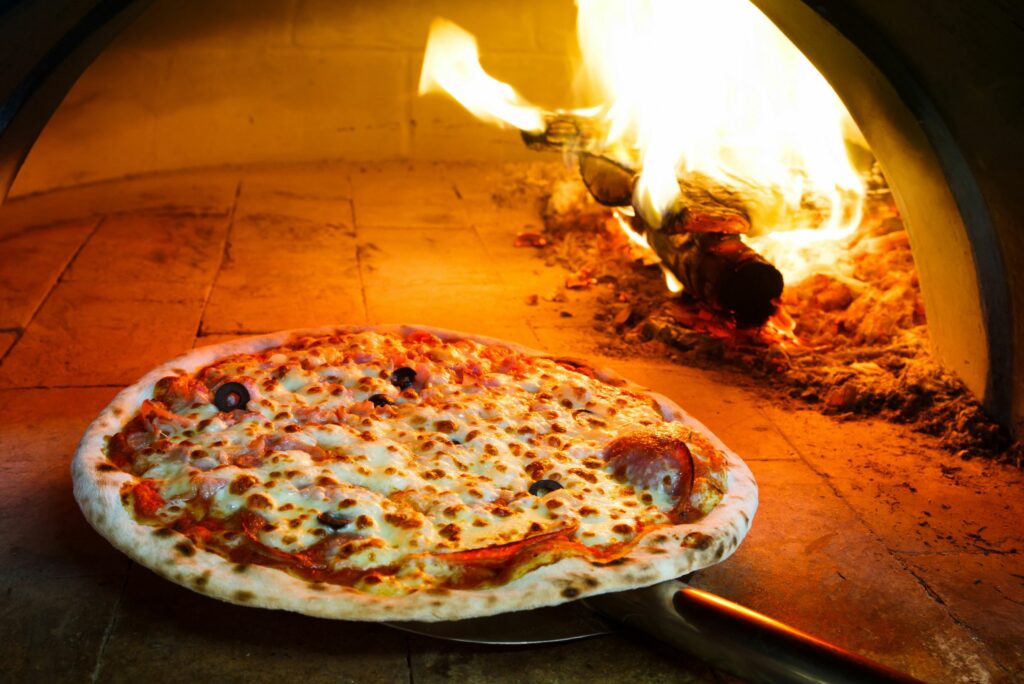
Pizza ovens are fascinating appliances that use a combination of thermal radiation, convection, and conduction to cook the perfect pizza. Understanding the science behind pizza ovens can help you appreciate the delicious pizza that comes out of them even more.
Thermal Radiation
Thermal radiation is the transfer of heat through electromagnetic waves. In pizza ovens, thermal radiation is responsible for heating the pizza and giving it that delicious crispy crust. Pizza ovens typically reach temperatures of up to 800 degrees Celsius, much higher than a conventional oven, allowing the pizza to cook quickly, giving it a unique flavor and texture.
Convection
Convection is the transfer of heat through the movement of a fluid, such as air. In pizza ovens, convection is responsible for cooking the toppings and melting the cheese. As the hot air circulates around the pizza, it cooks the toppings evenly and melts the cheese, creating a delicious and gooey pizza.
Conduction
Conduction is the transfer of heat through direct contact. In pizza ovens, conduction is responsible for heating the pizza stone, which then transfers the heat to the pizza. The pizza stone absorbs the heat from the oven and then radiates it back to the pizza, cooking it evenly and giving it that crispy crust.
In summary, pizza ovens use a combination of thermal radiation, convection, and conduction to cook the perfect pizza. The high temperatures and unique cooking methods create a delicious pizza that is hard to replicate in a conventional oven.
Types of Pizza Ovens
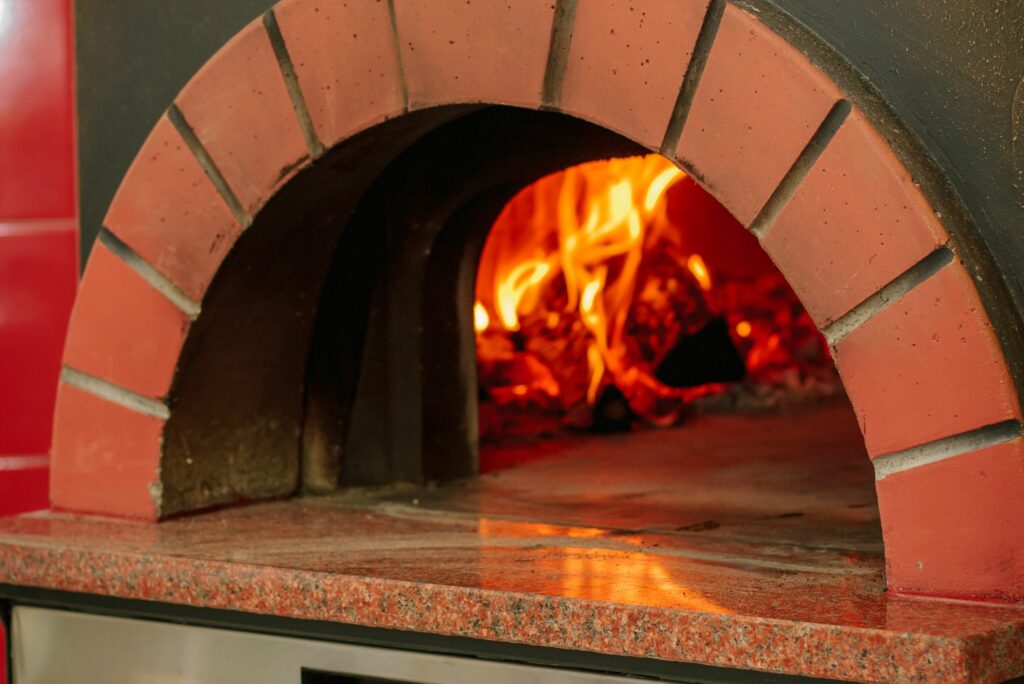
There are three main types of pizza ovens: wood-fired, gas, and electric. Each type has its own unique features and benefits. In this section, we will explore each type of pizza oven in more detail.
Wood-Fired Pizza Ovens
Wood-fired pizza ovens are the most traditional and popular type of pizza oven. These ovens use wood as the primary fuel source, which creates a unique smoky flavor in the pizza. Wood-fired pizza ovens can reach extremely high temperatures, which allows the pizza to cook quickly and evenly. These ovens are typically made from brick or clay and require a skilled operator to maintain the fire and temperature.
One of the benefits of a wood-fired pizza oven is that it can be used for other types of cooking, such as roasting vegetables or baking bread. However, these ovens require more maintenance and upkeep than other types of pizza ovens.
Gas Pizza Ovens
Gas pizza ovens are a popular choice for commercial kitchens and pizzerias. These ovens use gas as the primary fuel source, which allows for precise temperature control. Gas pizza ovens can be heated up quickly and are easy to maintain. They are also more energy-efficient than wood-fired pizza ovens.
One of the benefits of a gas pizza oven is that it can be used in a variety of settings, including outdoor kitchens and mobile pizza trailers. However, these ovens do not produce the same smoky flavor as wood-fired pizza ovens.
Electric Pizza Ovens
Electric pizza ovens are a popular choice for home kitchens and small pizzerias. These ovens use electricity as the primary fuel source, which allows for precise temperature control. Electric pizza ovens are easy to use and require minimal maintenance. They are also more energy-efficient than gas and wood-fired pizza ovens.
One of the benefits of an electric pizza oven is that it can be used in a variety of settings, including apartments and small kitchens. However, these ovens do not produce the same smoky flavor as wood-fired pizza ovens.
Factors Affecting Pizza Oven Performance
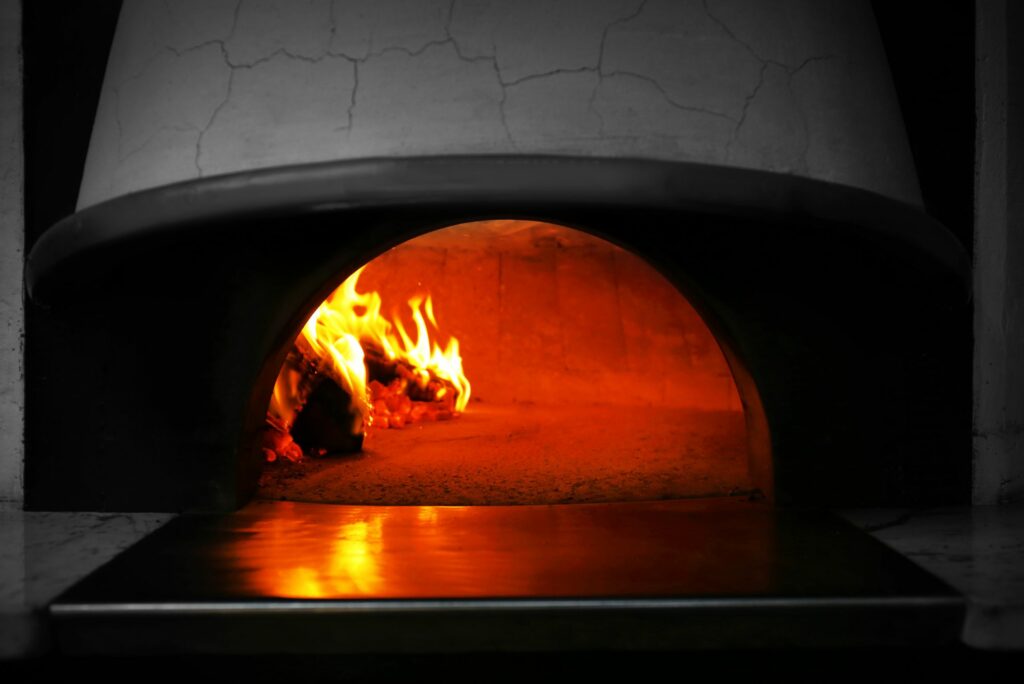
Pizza ovens are designed to reach high temperatures quickly and cook pizzas to perfection. However, several factors can affect their performance, including temperature control, heat retention, and cooking surface.
Temperature Control
Temperature control is crucial to achieving the perfect pizza. Pizza ovens need to be heated between 500-900°F for the perfect crust, melted cheese, and fully cooked topping combination. The exact temperature depends on the type of pizza being cooked as well as the type of oven used (wood-fired, electric, etc.).
Some pizza ovens come with built-in temperature control features, while others require manual adjustments. It is essential to monitor the temperature regularly to ensure consistent results. Using a thermometer is a great way to monitor the temperature accurately.
Heat Retention
Heat retention is another critical factor that affects pizza oven performance. The oven’s heating elements, whether wood-fired, gas or electric, heat up the inside of the oven to temperatures ranging from 480°F to 700°F, and sometimes up to 1,000°F. The dome and base then retain heat by trapping it in with bricks, tiles, and insulated layers. This is what allows the pizza oven to quickly reach temperatures over 800°F.
In addition to high temperatures and even distribution of heat, a key factor in how pizza ovens work is how they retain moisture. This is especially important when making pizzas with thicker crusts or more toppings, as these require longer cook times and retain more of their moisture.
Cooking Surface
The cooking surface is another important factor that affects pizza oven performance. The cooking surface should be made of a material that can withstand high temperatures and distribute heat evenly. Ceramic, stone, and cast iron are popular choices for pizza oven cooking surfaces.
The cooking surface should also be preheated before cooking to ensure that the pizza cooks evenly. Preheating the cooking surface helps to prevent the pizza from sticking and ensures that the crust is crispy.
In conclusion, temperature control, heat retention, and cooking surface are three critical factors that affect pizza oven performance. By paying attention to these factors, you can ensure that your pizza oven delivers perfect pizzas every time.
Conclusion
In conclusion, pizza ovens are specifically designed to cook pizzas to perfection. They come in different types, including wood-fired, propane, and gas ovens, each with its own unique features and benefits.
Wood-fired pizza ovens use burning wood as the fuel source, providing a distinct smoky flavor to the pizza. The oven’s dome and base trap heat with bricks, tiles, and insulated layers, allowing the oven to quickly reach temperatures over 800°F. This high temperature cooks the pizza quickly, resulting in a crispy crust and perfectly melted cheese.
Propane and gas pizza ovens, on the other hand, use gas as the fuel source, providing a consistent heat source for cooking pizzas. These ovens are ideal for commercial use and are often found in pizzerias and restaurants.
No matter the type, pizza ovens work by using heat to cook the pizza. The oven’s high temperature cooks the pizza quickly, resulting in a delicious and crispy crust. Safety features and precautions are often included to ensure that the oven is used safely and effectively.
In summary, pizza ovens are a must-have for any pizza lover. Whether you prefer wood-fired, propane, or gas ovens, each type provides a unique cooking experience that results in a delicious and perfectly cooked pizza.


